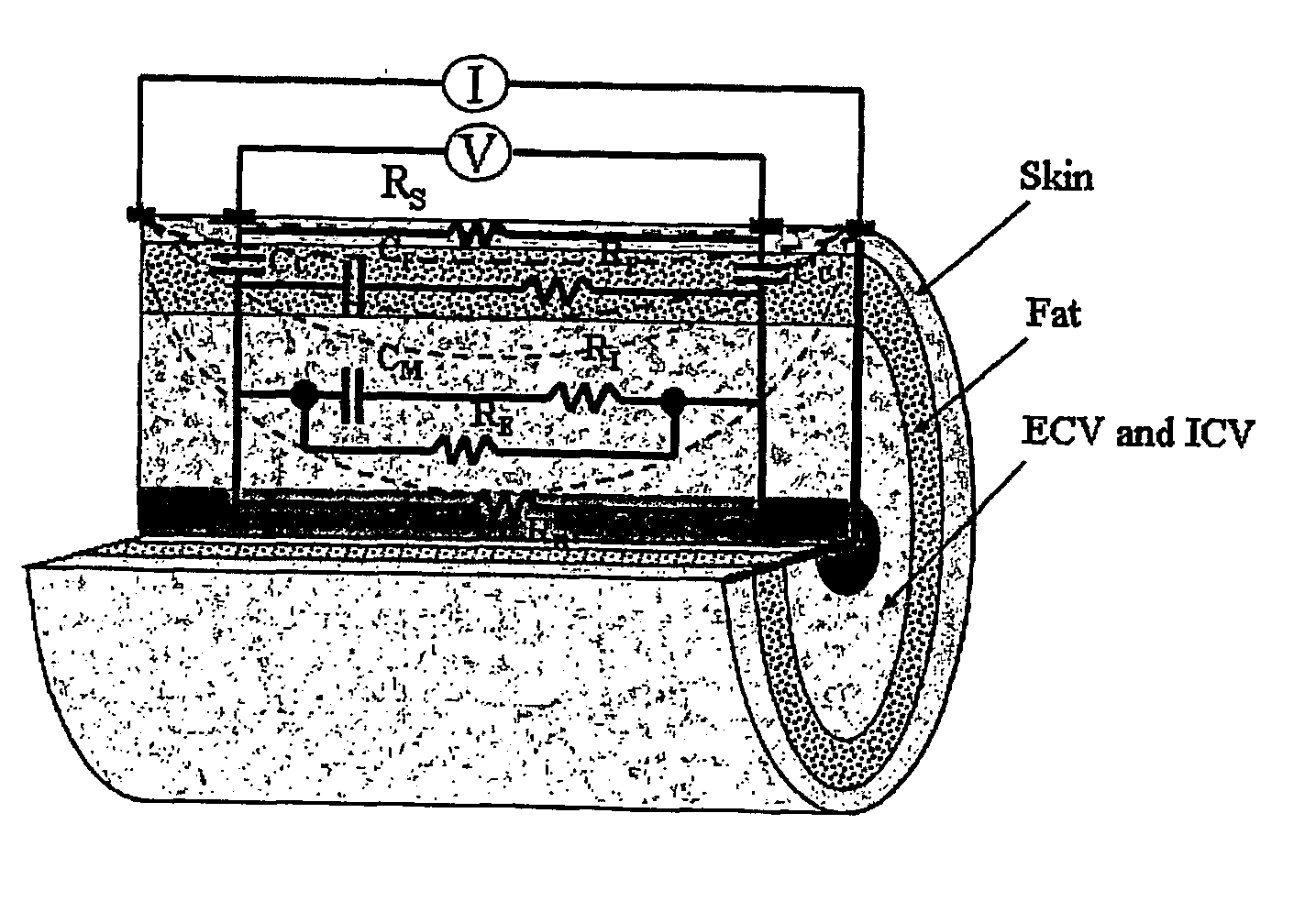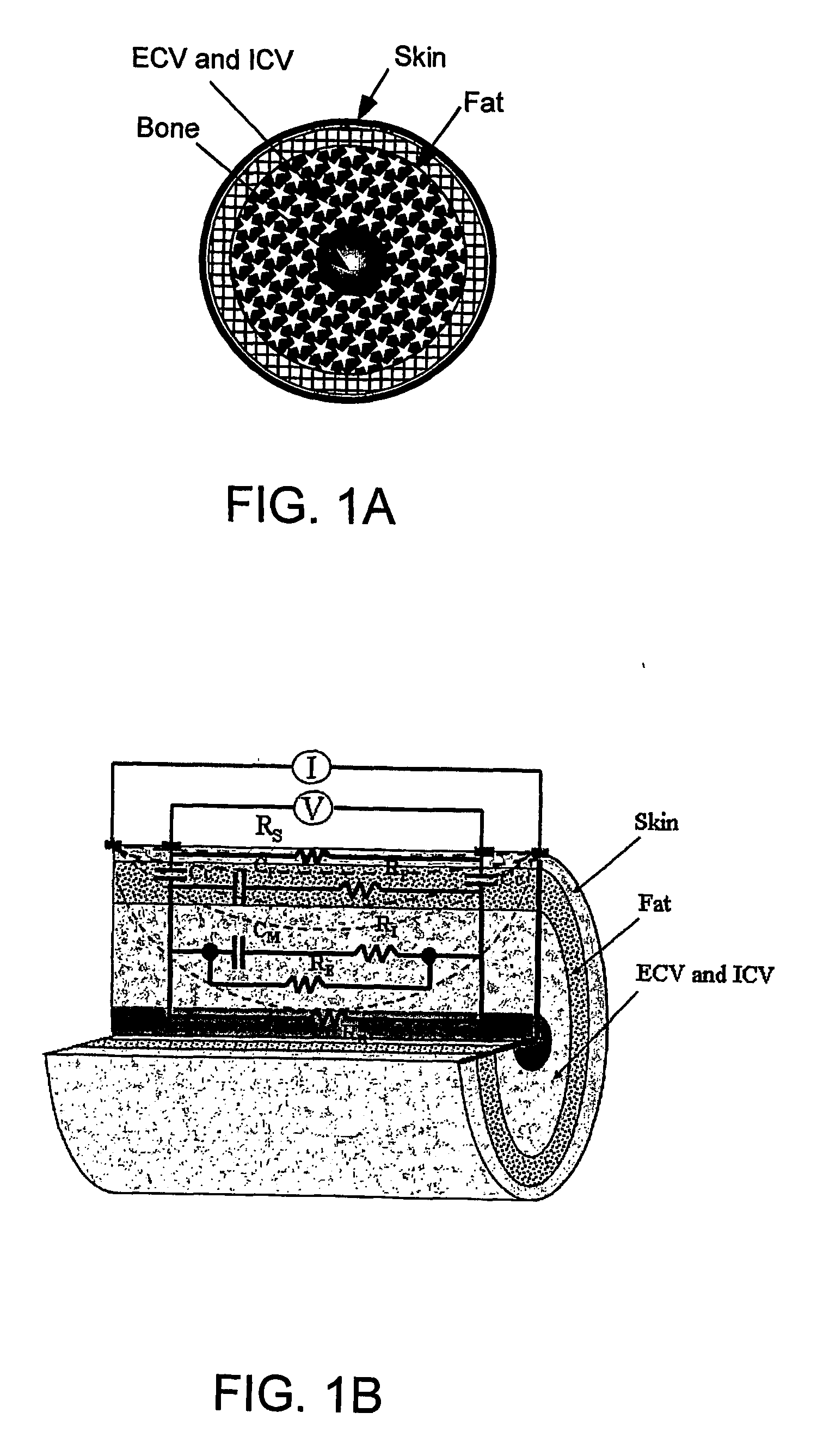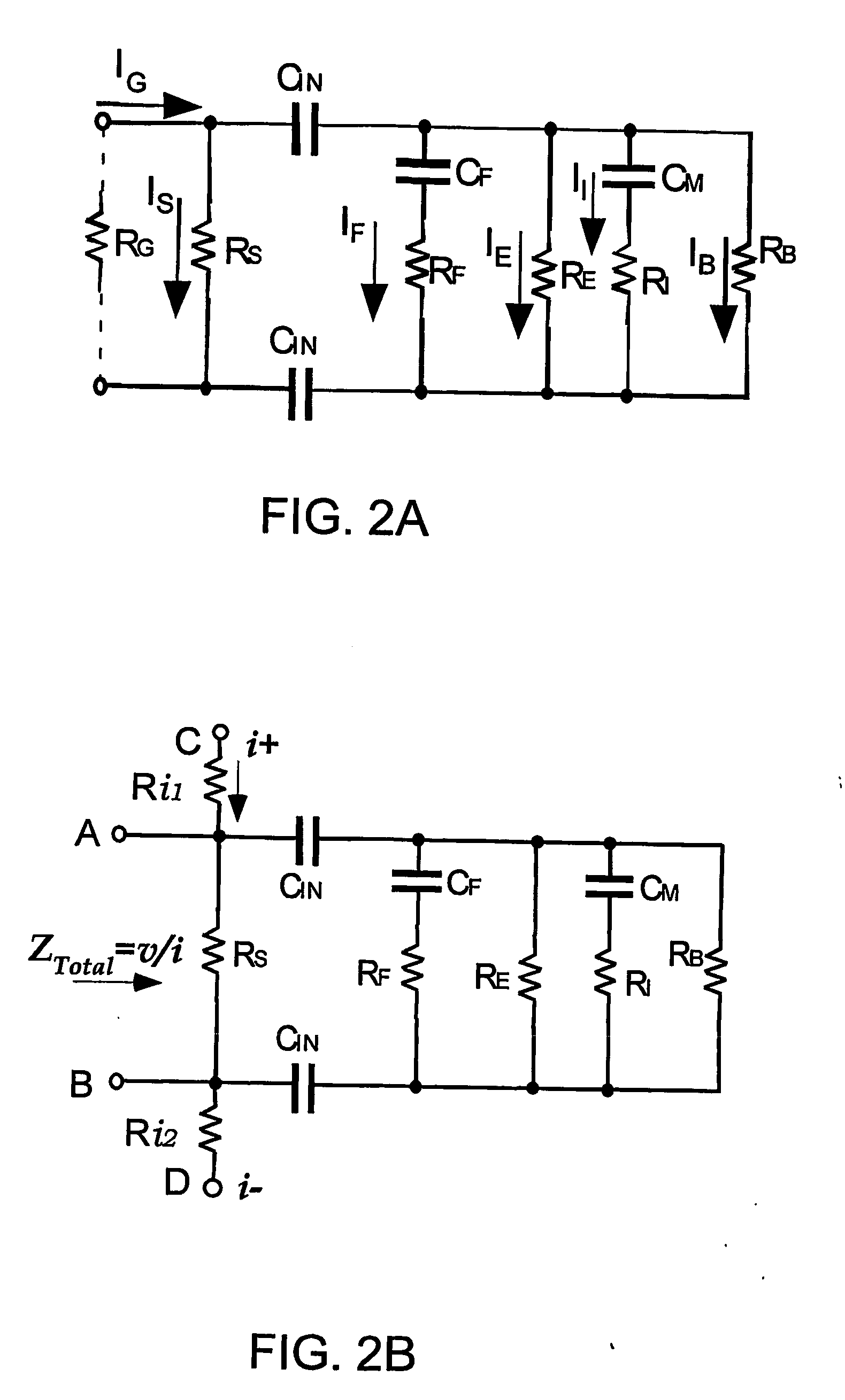Bioimpedance methods and apparatus
a bioimpedance and apparatus technology, applied in the field of bioimpedance methods and apparatuses, can solve the problems of adversely affecting the accuracy of measurement and analysis using currently available bioimpedance techniques, affecting the accuracy of bioimpedance measurements at 50 kilohertz, and not widely accepted clinical practice practices
- Summary
- Abstract
- Description
- Claims
- Application Information
AI Technical Summary
Benefits of technology
Problems solved by technology
Method used
Image
Examples
example 1
Effect of Fat Mass on Bioimpedance Analysis
[0091] This example shows that fat mass is a major factor affecting the accurate measurement of body composition, including the accurate measurement of body fluid in clinical practice in dialysis patients, using bioimpedance analysis.
[0092] 28 chronic hemodialysis patients were studied before treatment. Table 2 sets forth the relevant parameters for this group of subjects (patients).
[0093] Calf bioimpedance measurements were performed using BIS device Xitron 4200 (Xitron Technologies, San Diego, Calif.). The procedure of placement of electrodes was published in a previous study [9]. As described therein, to place the electrodes in the normal position, the distance (H) between the central part of the patella and the center of the lateral malleolus was measured while the subject was in the sitting position (see FIG. 6). With the patient recumbent, two measuring electrodes were placed, one 5 cm above the mid point M and another 5 cm below. ...
example 2
Multi-Frequency Analysis
[0103] To improve existing BIS techniques, a correct electrical model should be able to explain the electrical properties with different proportions of body tissues over a wide range of current frequencies. The aim of this study was to evaluate frequency response of the equivalent circuit model from 5 kHz to 1 MHz measured at the skin of the calf, The equivalent circuit model is shown in FIG. 2B.
[0104] The same 28 chronic hemodialysis patients as in Example 1 were studied before treatment (see Table 2). Again, calf bioimpedance measurements were performed using BIS device Xitron 4200 (Xitron Technologies, San Diego, Calif.) and the placement of electrodes was as described above in Example 1 (see FIG. 6).
[0105] Calf resistance and reactance were measured using BIS device with 50 logarithmically distributed frequencies from 5 kHz to 1 MHz. Fat mass, muscle mass and bone were separately measured in the same area of BIS measurement by MRI. Patients were divide...
example 3
Single Low Frequency Bioimpedance Measurements
[0117]FIG. 13 is a plot based on the data of Examples 1 and 2 which shows the lack of a correlation between measured resistance values at 5 kilohertz and muscle mass determined by MRI. This data supports the conclusion that at low frequencies, measured bioimpedance data is not responsive to the muscle content of a segment. Rather, as set forth in the circuit model of FIG. 3, at these frequencies, the components of a segment that primarily determine the measured values obtained with a bioimpedance procedure are the fat and extracellular fluid components.
PUM
 Login to View More
Login to View More Abstract
Description
Claims
Application Information
 Login to View More
Login to View More - R&D
- Intellectual Property
- Life Sciences
- Materials
- Tech Scout
- Unparalleled Data Quality
- Higher Quality Content
- 60% Fewer Hallucinations
Browse by: Latest US Patents, China's latest patents, Technical Efficacy Thesaurus, Application Domain, Technology Topic, Popular Technical Reports.
© 2025 PatSnap. All rights reserved.Legal|Privacy policy|Modern Slavery Act Transparency Statement|Sitemap|About US| Contact US: help@patsnap.com



